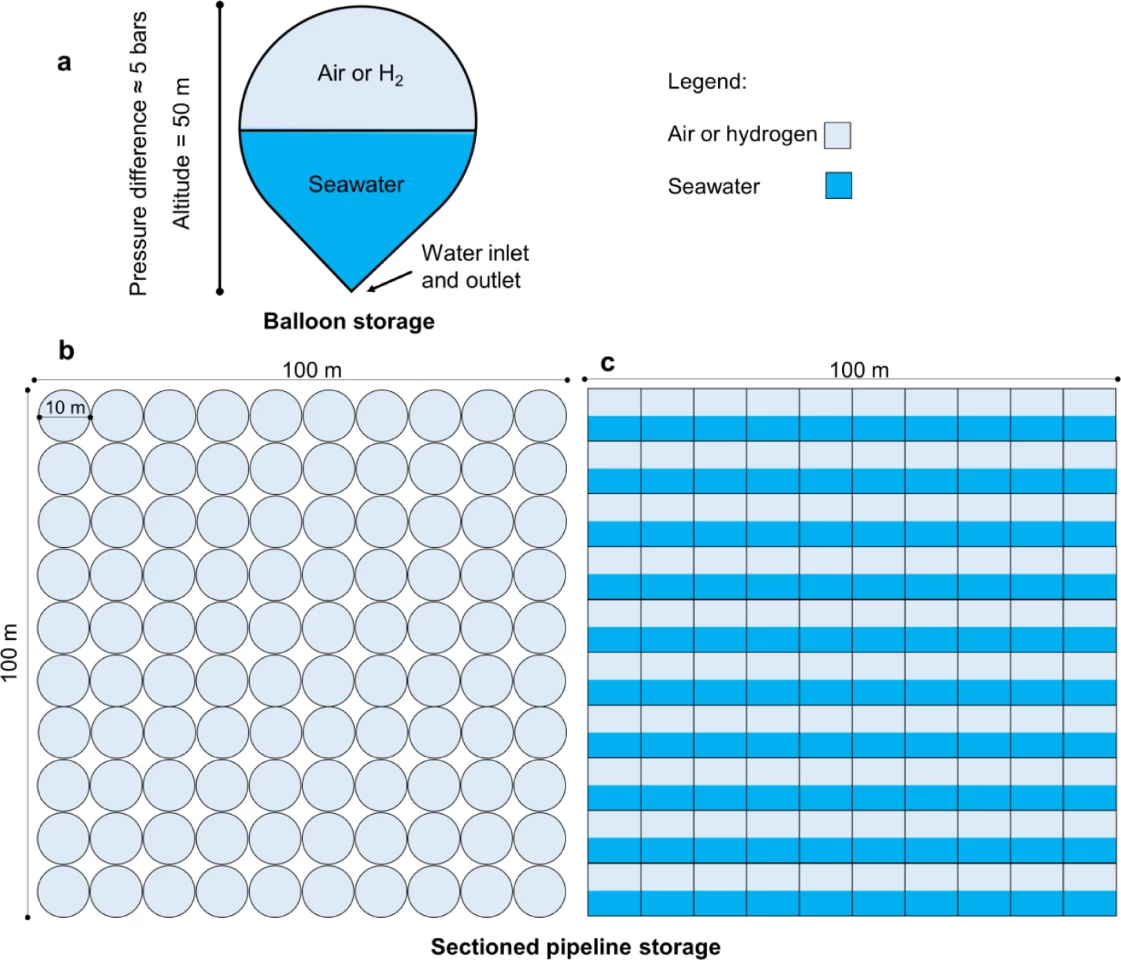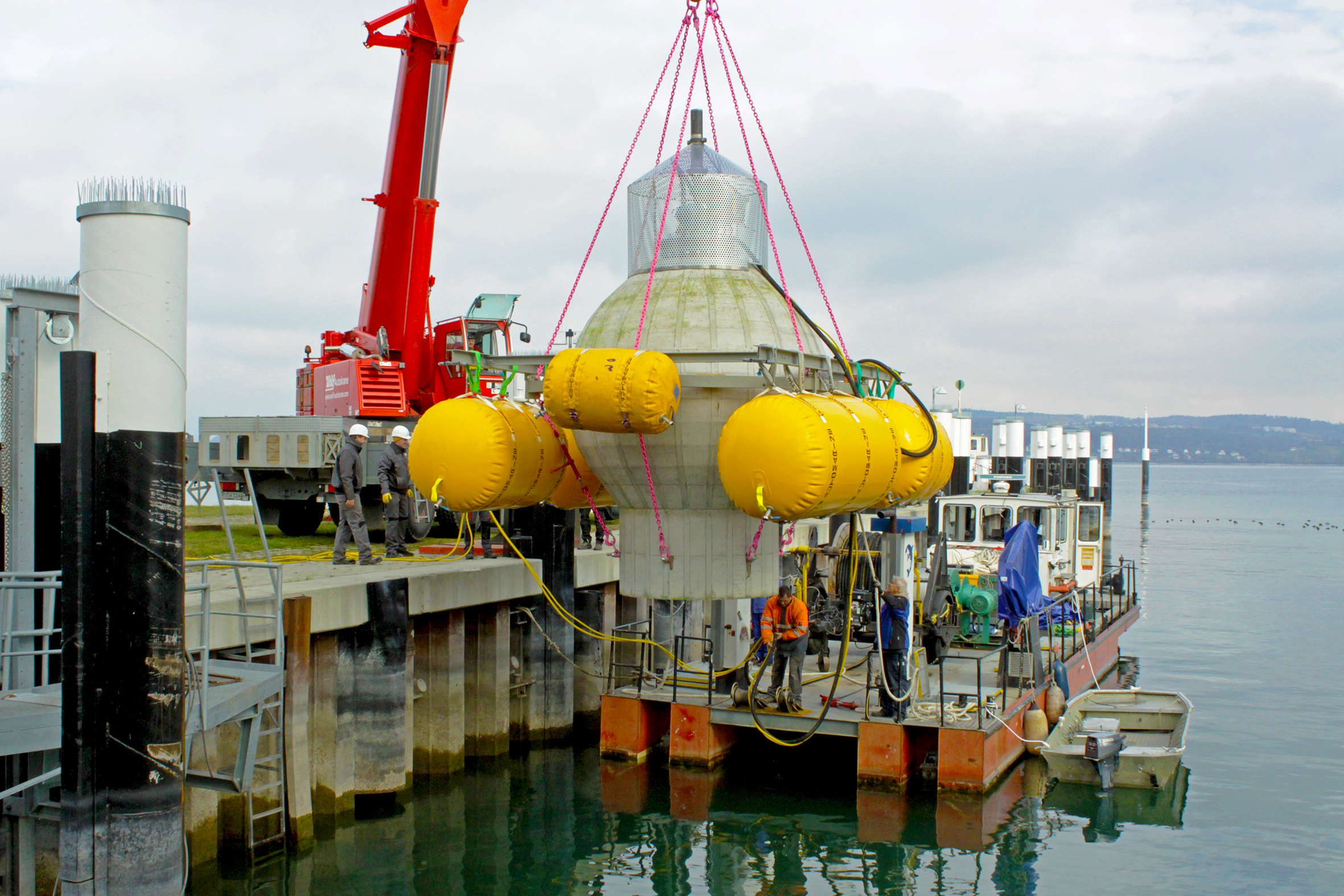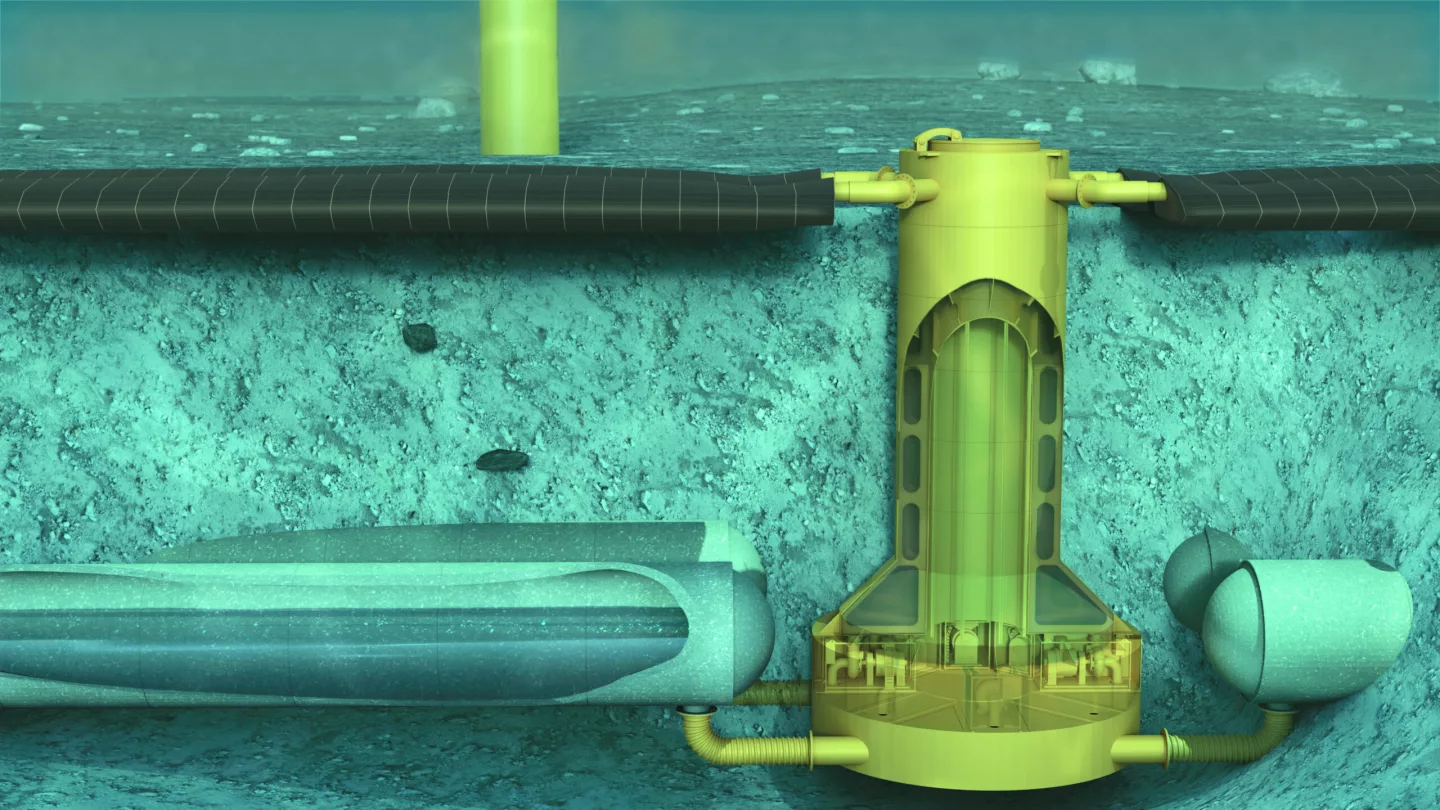Batteries are the key to the future of renewable energy. We all know that in order for intermittent renewables like solar and wind to be useful, we need energy storage to make them work over long periods of time. Lithium-ion batteries come to mind, but they’re still too expensive for truly long-term storage. Pumped hydro storage makes up the largest battery systems in the world, but they’re limited to areas with large bodies of water and vertical height differences. Over 96% of the earth’s water is contained in the oceans, so what if we could turn oceans or lakes themselves into a battery? There’s some compelling technologies here, but let’s see if we can come to a decision on this.
At this point it shouldn’t be a surprise to any of you that I have a fascination with energy storage technologies. If we’re going to transition away from fossil fuels towards renewables, new energy storage techniques are essential. As I’ve mentioned in previous videos, a big issue with offshore wind and large scale solar technologies is how to store their energy, and currently, the Levelized Cost of Storage (LCOS) of newly-installed grid-scale lithium batteries ranges from $131/MWh to $232/MWh. In a race to drive down storage prices, some researchers and companies are trying to develop underwater storage systems that turn the ocean and lakes into a battery. 1 But how well do they actually work?
The first alternative is called Buoyancy Energy Storage Technology (BEST), which has been developed by researchers at the International Institute for Applied Systems Analysis (IIASA). Imagine that you’re on the beach or in the pool and you force a ball under the water. Since the ball is filled with air, which is less dense than water, it needs considerable force to keep it submerged, right? So while the ball is under the water, it’s storing potential energy, and this is the principle behind BEST. Instead of a ball, BEST uses a platform anchored on the ocean floor that’s connected to a 100 meter x 100 meter array of high-density polyethylene pipes, each filled with compressed gas, like air or hydrogen.
BEST is used in conjunction with floating solar power stations or offshore wind turbines. As the floating solar power plant or the offshore wind turbines generate electricity, it drives electric motors that pull the buoyant tubes down to the ocean floor in order to store that potential energy. When energy is needed for the grid, the tubes are released, and their upward force drives the motor in reverse, operating as a generator and pushing electricity into the grid. 2

After simulating the system and performing an economical analysis, the researchers concluded that the system could have a great performance in storing energy from offshore wind farms operating close to coastlines and islands with no mountains.
The downside? The cost. From off the shelf parts, they estimated a levelized cost of storage at $496/MWh, which is pretty high when compared to lithium-ion batteries. However, there are nuances to that number. The researchers affirmed that if investments were made to develop new materials and technologies for the BEST system, instead of using off the shelf parts that aren’t optimized for the use, this could reduce its LCOS to $50/MWh, storing energy in a weekly cycle. However, there are some big assumptions that lead to a ten fold cost reduction.3 More fine-tuning is required before the cost can be accurately estimated. In addition, installation costs are also a constraint since BEST systems come in at $4,000 to $8,000/kW, while a wind turbine costs $1,600/kW, and lithium batteries come in at $1,200/kW for a 4-hour battery system.2 4
While BEST still has some refining to do, the Netherlands-based company FLASC B.V., a spin-off of the University of Malta, has also been developing an interesting hydro-pneumatic energy storage system for floating offshore applications. FLASC, which stands for Floating Liquid Piston Accumulator using Seawater under Compression (that’s one heck of an acronym), is an energy storage device where renewable energy is stored using a hydro-pneumatic liquid piston, driven by a bidirectional pump, which can also work as a turbine. It can be installed directly into a floating solar platform or floating wind turbine.

In this system, clean electricity is used to pump ocean water into a closed chamber, compressing a metered mass of air. When energy demand spikes, the system allows compressed air to push water back through a hydraulic turbine generator, recovering the stored energy. 5 6

The system can be installed in different ways: within the floating platform with an external subsea hydro-pneumatic module; entirely on the floating platform; or as a subsea installation. The first installation method was tested as part of an experiment between 2017 and 2019. The second type will be deployed in 2022 as a pilot system for a large-scale multi-purpose floating platform. And the complete subsea installation is currently being tested with a leading subsea engineering service company, targeting oil & gas applications and fixed-foundation offshore wind. The company is also exploring the use of FLASC for liquefaction of natural gas, reverse osmosis desalination, and offshore green hydrogen production.
Some pros of this system are that it uses the ocean as a heat sink, achieves thermodynamic efficiencies above 95%, and can perform well even in shallow water (from 20 to 30 meters). On top of that, the saving costs can range between 20% to 50%, and each system is expected to last for over 20 years.
How does FLASC’s life expectancy compare to a lithium-ion battery storage facility? An analysis using cumulative damage modeling tools developed by the company showed that using lithium-ion batteries to suppress wind turbine intermittency would require four replacements over a 25-year project. Using typical offshore maintenance, an analogous FLASC system could last the entire duration of the project. From an economics perspective, a FLASC system would save around €500,000/MWh (about $554,000/MWh) throughout its lifespan — ruling out logistical costs to replace the battery systems, as well as any downtime that may result. 5 6 7 However, the technology is still in the early development stage, with the company working on a 1:10 scale demonstration prototype. While promising, there’s still a long way to go until we see these systems storing energy on a large scale. 8
So what about underwater pumped storage hydropower?
The idea behind this system is pretty similar to pumped storage hydropower installed onshore. You pump water to a reservoir located at a higher altitude when energy supply is higher than demand, and then release the water to drive turbines located downstream when demand is high. In underwater pumped storage, the power plant is already on the water, an enclosed vessel containing water is installed on the seafloor. When there’s excess energy electricity is used to pump water up from the vessel leaving the inside at a near-vacuum. Then, when the stored energy is needed, the water is released back into the vessel using the pressure generated by the seawater, flowing through a hydraulic turbine and producing clean electricity.
There are many benefits to the system: the existing landscape isn’t affected, water quality doesn’t deteriorate, there’s no constraint regarding water level and temperature, and the system takes advantage of natural water pressure to produce energy. 9 For each 10 meters of depth, pressure increases by about one atmosphere (atm or about 1 bar), and with the vessels at near-vacuum when the system has 100% energy stored, there’s a big energy potential to be harnessed. Some designs are intended to operate at pressures above 75 bar with efficiencies around 70-80%, which is very close to traditional pumped hydro storage.
These underwater storage systems can be easily scaled up by adding more vessels and electric cables to carry electricity. In addition, compared to conventional pumped hydro storage, underwater systems don’t require land in mountains or valleys to build reservoirs. They also don’t lose water due to evaporation, in the way that open reservoirs do. 10
The first project that put this concept in practice was the Stored Energy at Sea project — StEnSea for short. It started with Prof. Dr. Schmidt-Böcking and Dr. Gerhard Luther, who patented the idea in 2011. At the end of that year, the Fraunhofer Institute for Energy Economics and Energy System Technology partnered with Hochtief Solutions AG and developed a pilot project. It consisted of building an underwater pumped storage system that used the sea itself as an upper storage reservoir and 30-meter diameter hollow spheres on the seabed, at a depth of 700 meters, to act as the lower storage reservoir.

At the end of 2012, they presented a business plan where the target costs per installed kW were €1,238 (about $1,366). In comparison, the costs for common pumped hydropower stations at that time was about €1,300/kW to €1,600/kW (about $1,434/kW to $1,765/kW).
In 2013, the StEnSea project was funded and feasibility studies started to be developed in collaboration with the University of Stuttgart. Three years later, a 1:10 scale mockup model with a 3-meter diameter was built and tested in a lake near Überlingen, Germany. 9 10 11 12

After the tests, the team discovered that their design was feasible at around 700 meters, where the pressure would be about 70 bar using materials that could handle the pressure. A single sphere could store 20 MWh of electricity when fully charged, meaning 5 MW for four hours. In addition, a study developed by the team showed that an underwater energy storage system with 80 spheres could output up to 400 MW, and would cost between €0.04 to €0.20 per kWh (equivalent to $44-$220/MWh). A cost competitive option.13
Researchers from MIT also worked on a very similar project, using hollow 30-meter diameter concrete spheres, which had 3-meter thick walls and weighed thousands of tons. That could make them an option for anchoring floating wind turbines. With the sphere sitting at 400-meter (1,312 ft) depth it could store up to 6 MWh of electricity, but a single sphere was expected to cost $12 million. The end result … the cost for storing energy in the sphere would be about $0.06/kWh, equivalent to $60/MWh. Another cost competitive option.14 15
The Dutch startup Ocean Grazer is also developing a utility-scale offshore energy storage system, which won the Best of Innovation award CES 2022. The Ocean Battery provides eco-friendly utility-scale energy storage up to GWh scale. It pairs flexible bladders with a buried concrete vessel, and rather than pumping water from the vessel into the ocean, water is pumped into sealed flexible bladders. When there is a demand for power, water is pumped from the bladders into the low-pressure reservoir, driving multiple turbines to produce electricity.
Ocean Grazer CEO Frits Bliek said:
“…Minimal discharging time is 0.5 hours, sufficient for the highest demands in the utility sector. Any lower power-capacity-to-storage-capacity can be created, to support bulk shifting, for example. There is no self-discharge whatsoever so power can be stored as long as you want…” – Frits Bliek.
A benefit of the Ocean Battery compared to the technology developed in the StEnSea project is that it operates as a sealed system. The battery has low maintenance costs and the materials used to build the Ocean Battery are steel, concrete, and rubber/PVC, which is available worldwide.
The company said that a single reservoir, which has a 20-million-liter capacity, could store up to 10 MWh of energy and the system could be easily scaled up. The system’s efficiency is expected to be from 70% to 80%. In addition, the system is likely to run for an unlimited number of cycles and have a minimal lifetime of 20 years — although the developers said that it could probably run for 30-50 years. 14 16 17 On the flip side, lithium-ion batteries can provide 2,000-3,000 cycles depending on the manufacturer and environmental conditions where the battery is used. Where the minimum lifetime of Ocean Grazer’s tech would last 20 years, most lithium batteries have a minimum lifetime of only 5 years. 18

Ocean Grazer is building its first commercial prototype in the north of the Netherlands in an inshore lake. The system will store energy from a floating solar plant and it’s expected to be finished in 2023.
A project involving a wind farm is also in the pipeline. Frits Bliek said:
“…On top of that, we’re working on an offshore project linked to a wind farm…A floating solar installation might potentially be included in that project, but details have to be worked out as we are in the scoping phase. The project is scheduled to be completed in 2025…” – Frits Bliek.17
Underwater pumped storage hydropower looks like a great alternative to lithium-ion batteries and conventional pumped storage hydropower. For comparison, the wholesale Levelized Cost of Storage (LCOS) of lithium batteries is between $131-$232/MWh and the LCOS for pumped hydropower is $175/MWh, while the MIT study showed an expected LCOS of $60/MWh for underwater pumped storage hydropower. 1 19
This innovative technology preserves water resources, doesn’t damage the landscape to build reservoirs, and stores significant amounts of electricity from offshore renewables at a practical cost. However, to become economically viable, the spheres need to be placed at least 200 meters deep, with an optimal depth of 750 meters. Currently, most offshore wind turbines are fixed-mounted, being installed up to 50 meters depth, so there’s still some open questions about implementation.
Turning the ocean into a battery looks like an amazing idea to make offshore renewables even better. Although the studies made by the companies and researchers have shown that some methods of storing electricity underwater looks pretty competitive to lithium-ion batteries, most of these technologies are still on the drawing board or just now getting to pilot projects. Even though there’s some pilot-scale data, there’s still steps required before deploying large-scale installations.
- Levelized Cost Of Energy, Levelized Cost Of Storage, and Levelized Cost Of Hydrogen↩↩
- Buoyancy Energy Storage Technology: An energy storage solution for islands, coastal regions, offshore wind power and hydrogen compression↩↩
- New undersea energy storage system harnesses the power of buoyancy↩
- Cost Projections for Utility-Scale Battery Storage: 2021 Update↩
- FLASC↩↩
- HYDRO-PNEUMATIC ENERGY STORAGE SYSTEM BY FLASC BV↩↩
- FLASC – Hydro-Pneumatic Energy Storage↩
- Statement of feasibility for new offshore energy storage technology↩
- The Feasibility of an Underwater Pumped Hydro Storage System↩↩
- UNDERWATER TANKS TURN ENERGY STORAGE UPSIDE-DOWN↩↩
- StEnSea↩
- Spheric Under Water Energy Reservoirs↩
- Techno-economic assessment of a subsea energy storage technology for power balancing services↩
- Ocean Battery stores renewable energy at the bottom of the sea↩↩
- Wind power — even without the wind↩
- Ocean Grazer↩
- Utility scale ocean battery, a bedfellow for floating PV↩↩
- Lithium-Ion vs Lead Acid Battery Life↩
- A Study – How the Cost of Storage per MWh Varies with Different Storage Technologies and Different Applications↩















Comments